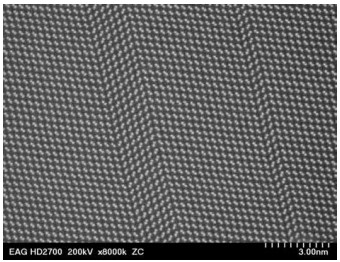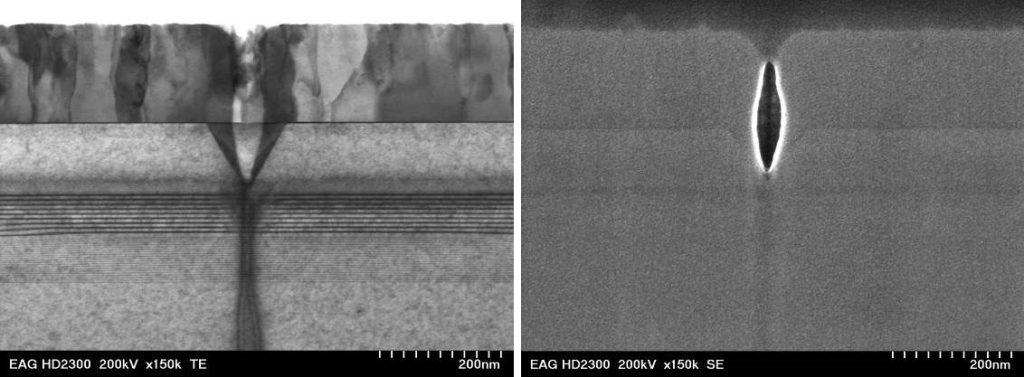Atomic-Resolution Secondary Electron Imaging
Home » Atomic-Resolution Secondary Electron Imaging
AC-STEM with Secondary Electron (SE) imaging provides the unique capability of evaluating specimen surface morphology with atomic-resolution.
Aberration Corrected Scanning Transmission Electron Microscopy (AC-STEM) is now widely used in material science research, product process control, and device failure analysis for a wide variety of different materials. The aberration-corrected electron probe scanned across a thin specimen provides atomic-resolution imaging not only from transmitted electrons (TE – HAADF, BF, ABF…), but also from secondary electrons (SE) emitted from the surface of the specimen. AC-STEM SE imaging provides a unique method of characterizing material structure including important depth information.
When surface information of a thin specimen is desired, STEM SE imaging can be utilized. This includes tasks such as particle morphology, CD measurements, and defect inspection to name a few. In the case of defects, it is often important to understand their location within the thickness of a (S)TEM specimen. Investigations based solely on transmitted electron information can often be inconclusive especially in the case of 3-D structures since TE images only provide a projection of the entire thickness of the sample.

In Figure 1, the BF-STEM (TE mode) image on the left, shows a brighter region above a threading dislocation induced V-defect at the ITO/GaN EPI interface. This contrast is indicative of a region having lower average Z, but it is impossible to distinguish whether the feature is simply filled with lighter material such as Carbon or is a void. However, SE imaging provides the conclusive answer.

Would you like to learn more about Atomic-Resolution Secondary Electron Imaging?
Contact us today for your Atomic-Resolution Secondary Electron Imaging needs. Please complete the form below to have an EAG expert contact you.